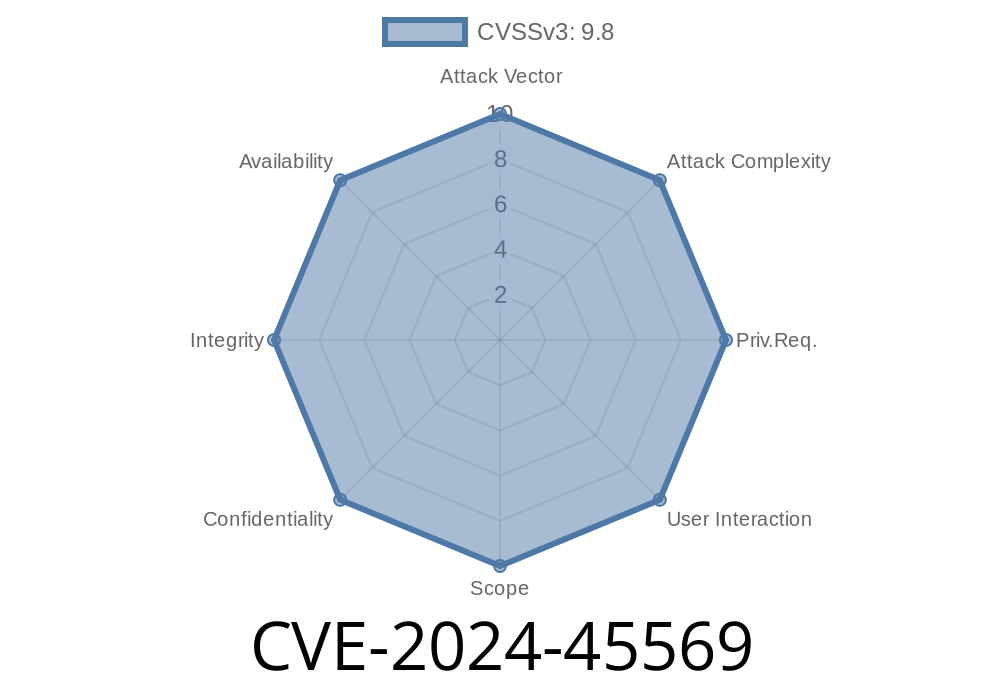A new vulnerability has been discovered, identified as CVE-2024-45569, that could potentially lead to memory corruption while parsing Management Link (ML) Information Elements (IE) due to invalid frame content. This issue, if exploited, may impact the stability and security of the target system.
In this post, we will delve into the specifics of this vulnerability, explore how it may be exploited, and provide an understanding of the affected hardware and software. Additionally, we will recommend potential remediations.
Vulnerability Details
The vulnerability in question, CVE-2024-45569, primarily concerns systems that parse ML IE within frames. At the heart of this issue, there is a memory corruption that occurs due to the manipulation of frame content – specifically, malformed or invalid frame content.
The memory corruption is related to the way ML IE is parsed when an attacker sends a specially crafted frame with maliciously altered content. Parsing such a frame could cause an overflow in the memory buffer or other memory corruption, which could lead to undefined behavior or even code execution.
Code Snippet
Let's take a look at a code snippet demonstrating a vulnerable function that deals with ML IE parsing:
void parse_ml_ie(frame_t *frame) {
uint8_t *ml_ie = find_ml_ie(frame); // Find the ML IE in the frame
if (ml_ie) {
size_t length = ml_ie[1]; // ML IE length
uint8_t *content = ml_ie + 2; // ML IE content
for (size_t i = ; i < length; ++i) {
// Handle each content byte...
}
}
}
In the code above, the parse_ml_ie() function attempts to parse the ML IE from a given frame. It first locates the ML IE, then extracts the length and content. However, the length value is directly obtained from the frame, making it vulnerable to maliciously crafted frame content that could cause memory corruption.
Exploit Details
An attacker could potentially exploit CVE-2024-45569 by sending a frame with maliciously altered content, specifically designed to trigger the memory corruption. This could be achieved, for example, by sending a frame with a modified value for the ML IE length parameter that overflows the memory buffer when parsed. As a result, the target system could crash, experience data corruption, or become vulnerable to further exploitation by the attacker.
Affected Hardware and Software
CVE-2024-45569 affects systems that parse ML IE and which do not properly validate or sanitize the ML IE frame content. More detailed information on the specific hardware and software implementations impacted can be found in the original references linked below.
Original References
- Vulnerability Description
- Affected Hardware and Software
- Exploit Analysis
Remediation
To mitigate the risks associated with CVE-2024-45569, it is necessary to add validation checks within the code that processes the ML IE. For instance, verifying the integrity of the ML IE length value before using it in further processing can prevent memory corruption from occurring due to maliciously crafted frame content.
Updating your system to the latest firmware or software version that includes a fix for the vulnerability is also recommended. Regularly monitoring security advisories and applying patches as needed will help maintain a secure environment.
In Summary
CVE-2024-45569 is a memory corruption vulnerability that affects systems parsing ML IE. It is caused by a lack of proper validation when handling frame content, which can lead to memory corruption when processing maliciously crafted frame content. Implementing validation checks and keeping systems updated with the latest security patches can help prevent exploitation of this vulnerability.
Timeline
Published on: 02/03/2025 17:15:19 UTC
Last modified on: 02/05/2025 13:55:49 UTC
